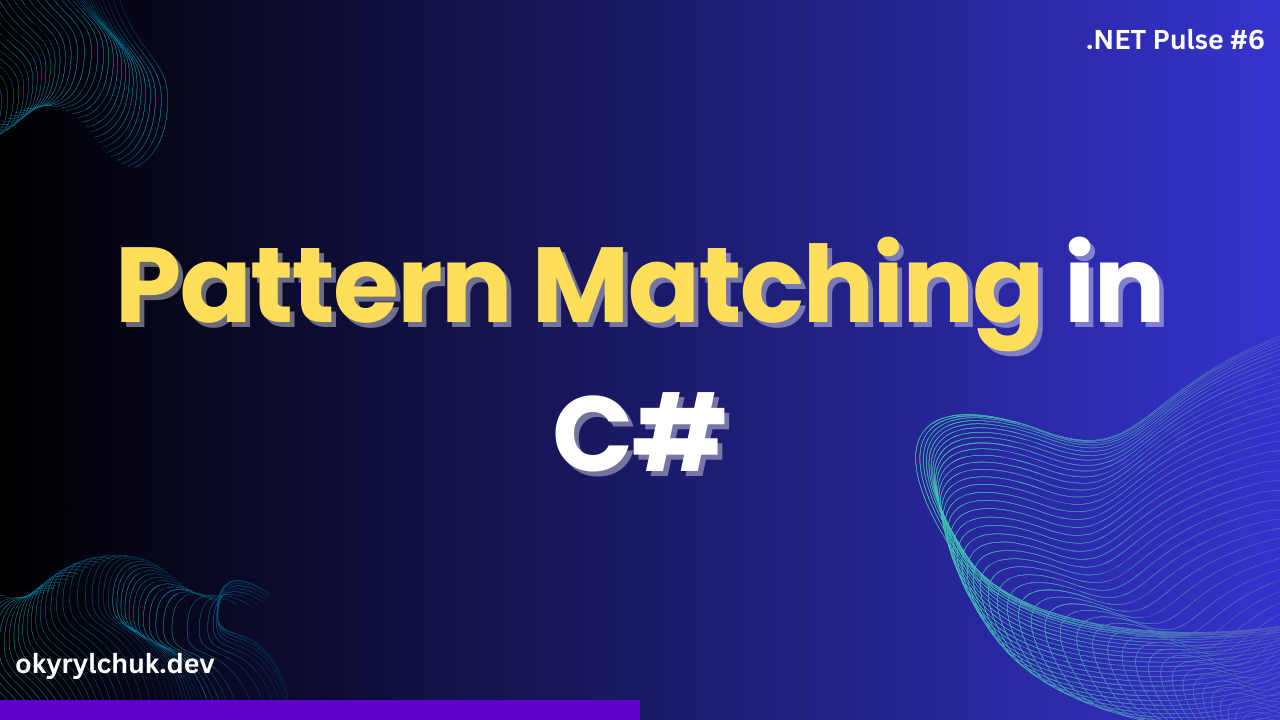.NET 9 with C# 13 is coming soon. It’s time to overview what it brings for us.
From the End Operator in Object Initializer
In C#, the ^ operator is called the “from the end” operator. It is used to index sequence elements starting from the end. This operator allows you to access elements relative to the end of the collection without needing to calculate the index manually.
Now, you can use the “from the end” operator in object initializer expressions.
The example below initializes an array from 5 to 1.
var test = new Test
{
Numbers =
{
[^1] = 1,
[^2] = 2,
[^3] = 3,
[^4] = 4,
[^5] = 5,
}
};
Console.WriteLine(string.Join(", ", test.Numbers));
// 5, 4, 3, 2, 1
public class Test
{
public int[] Numbers = new int[5];
}Params Collections
The params keyword allows you to pass a variable number of arguments to a method. It is used when the number of arguments is unknown at compile time and lets you specify a method parameter that takes a variable number of arguments of a specified type.
Before C# 13, the parameter must be a single dimensional array.
Now, you can use params with any recognized collection type, including Spans and types that implement IEnumerable<T> and have an Add method.
// Before C# 13
void Method1(params object[] args) { }
// C# 13
void Method2(params IList<object> args)
{ }
// C# 13
void Method3(params ICollection<object> args)
{ }
// C# 13
void Method4(params ReadOnlySpan<object> args)
{ }New Lock Object
The lock statement in C# ensures that a block of code is executed by only one thread at a time, preventing race conditions when multiple threads try to access shared resources. It works by acquiring a lock on a specified object for the duration of the code block, ensuring that other threads must wait until the lock is released.
public class OldLock
{
private readonly object _lockObj = new();
private static int sharedResource = 0;
public void IncrementResource()
{
lock (_lockObj)
{
sharedResource++;
}
}
}C# 13 introduces a new Lock type. It has a new efficient API for better thread synchronization. The Lock.EnterScope() method enters an exclusive scope, which is a ref struct supporting the Dispose pattern. It means you can use it with using statement as other disposable objects.
public class NewLock
{
private readonly Lock _lockObj = new();
private static int sharedResource = 0;
public void IncrementResource()
{
using (_lockObj.EnterScope())
{
sharedResource++;
}
}
}However, you can also use a new Lock type with a lock statement. It recognizes if the target of the lock is a Lock object and uses a new API rather than a traditional Monitor API.
Partial Properties And Indexers
The partial keyword splits the definition of a class, struct, interface, or method across multiple files. This allows you to organize code more effectively, especially in large projects or when dealing with auto-generated code.
Since C#, you can declare partial properties and indexers. This feature extends the possibilities of source generators.
public partial class Foo
{
[GeneratedRegex("abc|def")]
private static partial Regex AbcRegex { get; }
public bool IsMatchAbc(string text)
=> AbcRegex.IsMatch(text);
}Ref in Async Methods
Before C# 13, you couldn’t use ref struct (for instance, Spans) as local variables in the async methods.
The code below wouldn’t compile.
async Task AsyncMethod()
{
await Task.Delay(1000);
ReadOnlySpan<char> span = "Hello, World";
// do something with span
}C# 13 allows local ref struct to be used in the async methods. You can also create ref struct local variables in the iterator methods (when you use yield return).
However, you cannot access such variables across an await and yield return boundary.
Additionally, in the same manner, you can use unsafe context in async and iterator methods.
Ref Struct as Generic Type
Before C# 13, ref struct types couldn’t be used as type arguments in generic types or methods.
With the introduction of an anti-constraint allowing ref struct, you can use ref struct in generic type declarations.
This anti-constraint specifies that the type argument for a type parameter can be a ref struct. The compiler ensures that all instances of that type parameter follow ref safety rules.
class Foo<T> where T : allows ref struct
{}
class Boo<T>
{}
class Example<T> where T : allows ref struct
{
private Foo<T> _foo; // allowed
private Boo<T> _boo; // disallowed
}Ref Struct Interface
C# 13 allows for ref struct to implement interfaces.
However, you cannot convert the ref struct type to an interface (line 3 in the example below) because it’s a boxing conversion, which is forbidden by ref safety. Also, you cannot declare methods explicitly implementing an interface method in the ref struct.
Foo foo = new Foo();
var _ = (IFoo)foo;
interface IFoo
{ }
ref struct Foo : IFoo
{ }Overload Resolution Priority Attribute
C# 13 introduces a new OverloadResolutionPriority attribute.
API authors can use it to prioritize overloads within a type, guiding consumers to specific APIs, even when they might be ambiguous or not chosen by C#’s default overload resolution rules.
The higher number means higher priority.
In the example below, the compiler selects the Display method overload with the ReadOnlySpan<char> parameter.
var service = new MyService();
service.Display("Hello World!");
public class MyService
{
[OverloadResolutionPriority(1)]
public void Display(string chars) =>
Console.WriteLine(chars);
[OverloadResolutionPriority(2)]
public void Display(ReadOnlySpan<char> chars) =>
Console.WriteLine(chars.ToArray());
}New Escape Sequence
Let’s see the following example.
string text = "\u001b[32mThis is green text\u001b[0m";
Console.WriteLine(text);The sequence \u001b is a Unicode escape sequence in C# representing the ESCAPE character (Unicode U+001B).
This character is used in ANSI escape codes to control text formatting in terminals.
• \u: Indicates that the following four hexadecimal digits represent a Unicode character.
• 001b: The hexadecimal code for the ESCAPE character (U+001B).
The sequence [32m is an ANSI escape code used to change the text color in terminals that support ANSI escape sequences. Specifically, 32m sets the text color to green.
Similarly, [0m is used to reset the text formatting to the default settings.
Instead of \u001b you could use \x1b. However, it’s not recommended because if the next characters following 1b were valid hexadecimal digits, those characters became part of the escape sequence.
Since C# 13, you can use a new \e escape sequence.
string text = "\e[32mThis is green text\e[0m";
Console.WriteLine(text);Method Group Natural Type
C# 13 introduces improvements in overload resolution for method groups.
The method group is a method, and all overloads have the same name.
Previously, the compiler generated the complete set of candidate methods for a method group. When a natural type was required, it was derived from this entire set of candidates.
The new approach is to prune the set of candidate methods at each scope, removing non-applicable candidates. For instance, it removes generic methods with the wrong number of type parameters. The process moves to the next outer scope if no candidate methods are found.


Pingback: Efficient Synchronization in C# with SemaphoreSlim - Oleg Kyrylchuk